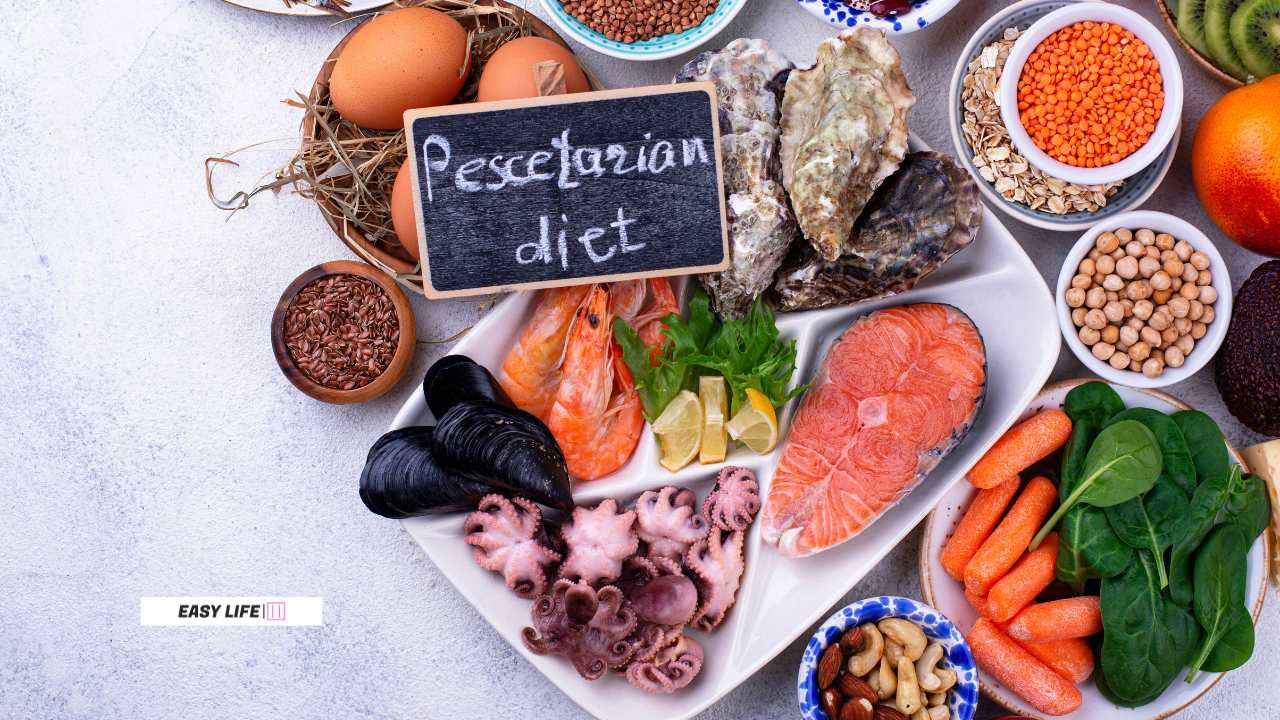The Paleo diet and the Pescatarian diet are two popular lifestyle options with devoted followers. While they appear to be very different on the surface, they share a surprising amount of similarities. This has resulted in the birth of a hybrid approach called as the “Paleo Pescatarian” diet, which blends the concepts of both for a novel and potentially beneficial way of eating.
Table of Contents
ToggleUnderstanding Paleo Pescatarian: A Fusion of Heritage and Health
What is Paleo?

The Paleo diet is based on the premise of emulating the diet of our hunter-gatherer ancestors. This means focusing on unprocessed foods that were readily available during the Paleolithic era, such as:
- Fruits and vegetables
- Nuts and seeds
- Lean meats and fish
- Eggs
Foods that were not widely available during this time period, such as grains, dairy products, legumes, and refined sugars, are excluded from the Paleo diet.
What is Pescatarian?

Pescatarians eat a vegetarian diet with one exception: fish and seafood. This allows individuals to receive the nutritional benefits of seafood, such as omega-3 fatty acids and high-quality protein, while also limiting their consumption of red meat and fowl.
Combining Paleo and Pescatarian
The Paleo Pescatarian diet takes the best of both worlds by combining the Paleo emphasis on whole, unprocessed foods with the inclusion of fish and seafood. This can be a good option for people who:
- Enjoy the health benefits of the Paleo diet but find it too restrictive
- Want to increase their intake of seafood for its nutritional value
- Are pescatarians looking for a more structured way of eating
The Core Principles of Paleo Pescatarian
- Whole Foods Emphasis: Paleo pescatarian is based on ingesting complete, nutrient-dense meals. Fresh fruits, vegetables, nuts, seeds, and lean fish take centre stage, delivering a wide range of important vitamins and minerals.
- Protein Prioritization: High-quality, sustainable seafood becomes the primary protein source, providing omega-3 fatty acids that are essential for heart health and cognitive function. Furthermore, lean meats from grass-fed animals help to provide a balanced protein intake.
- Healthy Fats Inclusion: Unlike traditional fat-restricted diets, paleo pescatarianism embraces healthful fats like avocados, olive oil, and fatty fish. These fats serve an important role in brain function and hormone homeostasis.
- Grain and Legume Exclusion: The removal of grains and legumes is consistent with the paleo concept, which seeks to reduce antinutrients and potential digestive irritants. This decision indicates a dedication to eating foods that our bodies are evolutionarily designed to digest.
Unraveling the Benefits: Nourishment for Body and Mind
1. Enhanced Nutrient Intake
Paleo pescatarianism excels at supplying a wide range of nutrients necessary for general wellness. The emphasis on whole foods assures a sufficient supply of vitamins, minerals, and antioxidants, which contribute to improved immune function and cellular regeneration.
2. Optimal Omega-3 Fatty Acid Profile
The addition of fatty fish to the paleo pescatarian diet provides an abundance of omega-3 fatty acids. These essential fats are known for their anti-inflammatory qualities, which promote cardiovascular health and cognitive well-being.
3. Weight Management and Satiety
The mix of lean proteins, healthy fats, and fiber-rich veggies promotes satiety, which could help with weight management. The nutritious density of paleo pescatarian meals guarantees that each mouthful provides both satisfaction and nutritional value.
4. Improved Blood Sugar Control
Paleo Pescatarian, which avoids refined carbs in favour of whole, unprocessed diets, may help with blood sugar control. This element can be very useful for people trying to control or prevent illnesses like type 2 diabetes.
Challenges of the Paleo Pescatarian Diet
As with any diet, there are also some challenges to consider with the Paleo Pescatarian approach:
- Cost: Fish and seafood can be more expensive than other sources of protein.
- Social limitations: It can be difficult to find Paleo-friendly pescatarian options when dining out or attending social gatherings.
- Planning and preparation: The Paleo Pescatarian diet requires careful planning and meal preparation to ensure that you are getting all the nutrients you need.
Getting Started with Paleo Pescatarian
If you’re interested in trying the Paleo Pescatarian diet, here are a few tips to get you started:
- Focus on whole, unprocessed foods. Choose plenty of fruits, vegetables, nuts, and seeds from the Paleo-approved list.
- Include a variety of fish and seafood. Aim for at least two servings of fish and seafood per week. Choose sustainable options like wild-caught salmon, tuna, and sardines.
- Limit your intake of processed foods. Avoid packaged snacks, sugary drinks, and refined grains.
- Plan your meals ahead of time. This will help you make sure you have healthy options on hand when you’re hungry.
- Find a support system. There are many online communities and resources for Paleo Pescatarians. Connecting with others who are following the same diet can help you stay motivated and on track.
Frequently Asked Questions (FAQs)
Conclusion: Savouring the Best of Both Worlds
Paleo pescatarianism exemplifies the changing landscape of dietary options, providing a balanced combination of traditional wisdom and modern nutritional science. Individuals who embrace this wonderful fusion can embark on a road to better health, tasty meals, and a deep connection with nature’s bounty. As you explore the paleo-pescatarian lifestyle, appreciate each bite, knowing that you are nourishing both your body and your taste senses.









